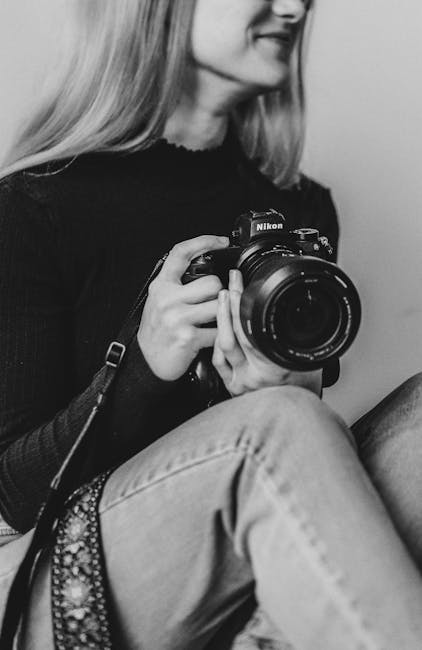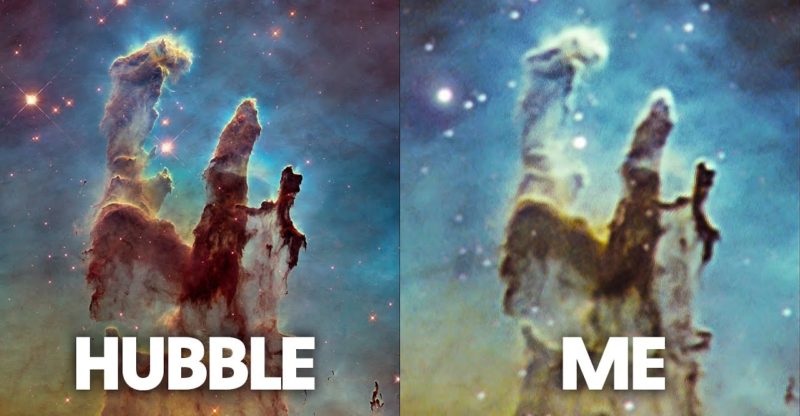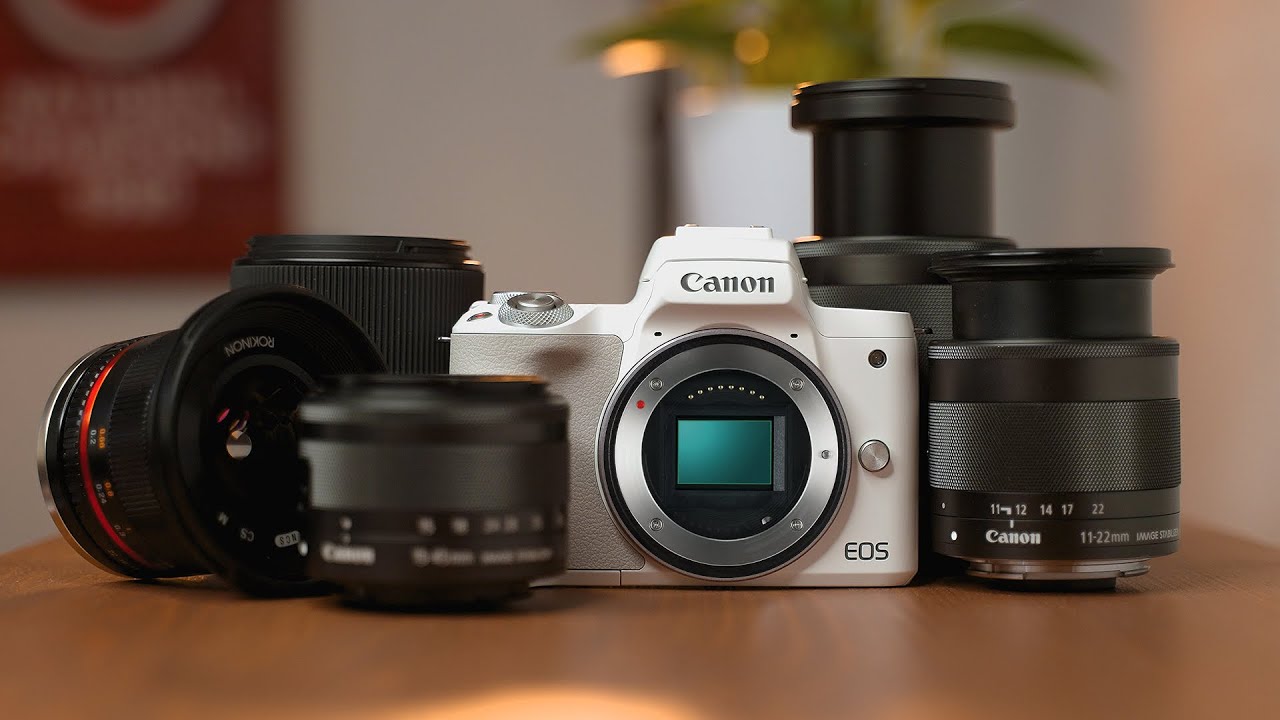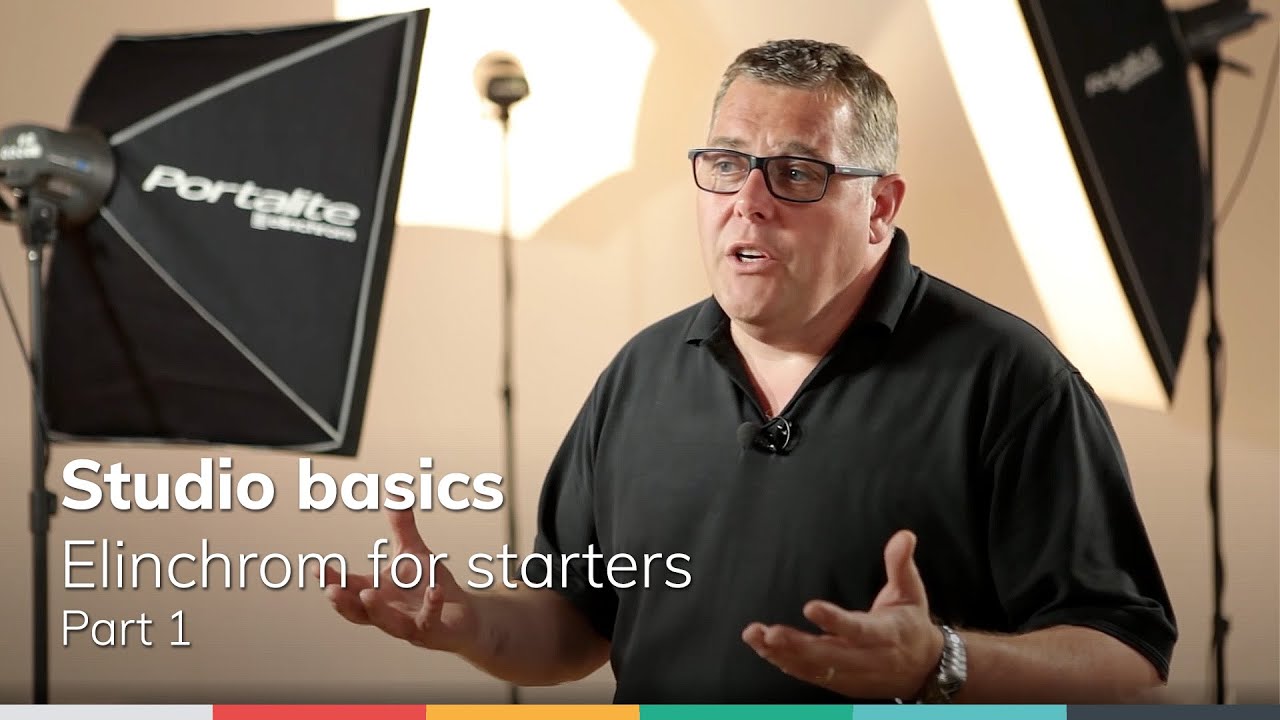Hubble vs. Amateur Astrophotographer
In this video, I'm going to take a close-up
picture of the pillars of creation. Yeah, the picture that the Hubble
space telescope made famous, that one. But my telescope isn't in space it's
just sitting right here in the backyard. I may not have NASA's budget or education
level for that matter, but I can hold my own. So grab a cold one because your old pal Trevor's
about to get real geeky about space again. Seriously, is this my job? the Pillars of Creation was an image created
using the Hubble space telescope back in 1995. It's one of the most iconic astronomical images
of all time and you've definitely seen it before. It features elephant trunks
of eroded interstellar gas that were shaped by intense
radiation of massive nearby stars. These finger-like columns
of gas and dust are actually inside of a very popular deep-sky target, the
Eagle Nebula in the constellation Serpens. This is a bright emission nebula and star-forming
region that's about 7000 light-years away. From my backyard here in Canada, the Eagle Nebula and the Pillars of Creation
will appear right about here in the south.
The telescope I'm using has a focal
length of about a thousand millimeters. So it'll really allow me to zoom in on those
Pillars of Creation and get an up-close photo. Believe it or not, even a small telescope
will reveal the core of the Eagle. It won't be as big, but you'll still be able to see the Pillars of Creation
in there. It's pretty amazing. The first time I shot the Eagle Nebula was
with a compact 80 millimeter refractor, and I could see the pillars
in there. It was so exciting. If you're new to astrophotography you might not
realize how light-polluted most of the world is. It makes observing and photographing even the brightest deep-sky objects
like the Eagle Nebula challenge. But thankfully, there is a solution. A good one. Light pollution filters can help you capture
better full-color images from the city, but narrowband filters are where
it really gets interesting. Since the Eagle Nebula is emitting
light primarily in hydrogen, I can isolate those important details using
a hydrogen-alpha filter or an h-a filter.
With a narrowband filter like that in place, my
camera sensor can ignore almost all other sources of light except for that very specific bandpass
of hydrogen-alpha at the 656-nanometer range. I'm using a new reducer lens
that will actually decrease the native magnification of the telescope. But it will give it a magical
boost in light-gathering power. Now, I've already got a good base image
of the eagle nebula that of course includes the pillars of creation in my archives. I've literally photographed the eagle
nebula over 30 times in my lifetime. Probably more, actually. But tonight, I'm going to take
the most important data yet.
Long, deep exposures of the core in
hydrogen-alpha, those beautiful pillars. I'll process my latest data captured tonight and apply it to my original photo
for the perfect pillar portrait The camera continues to take sub-exposures on
the Eagle Nebula and those beautiful pillars. I went with 300-second exposures. I said I would go longer but because
I have that reducer in place, I am actually gathering more
light in a minute exposure. So, I felt like that was the sweet spot. The camera is a monochrome CCD, not a CMOS camera. This is the starlight express SX-42, and this was
a kit sent by Starlight Express two years ago now. It's just been an amazing camera, and I've just had so many other things on
the go, I haven't used it a lot recently.
But the reason I'm using this
setup tonight is because I have another set up in the observatory,
which is so close to being ready to go. I just need to iron a few more things out
but in there is that ASI2600MM Pro camera. That's my observatory camera if you will Well that's just… reease the three screws…

Remove the cover… ethanol on our cotton bud? okay isopropyl…12 bottles? DSLR sensor cleaning kit. Add a cart. How am I gonna pay for all those stuff? This video was sponsored by Skillshare,
the online learning community that has thousands of classes on pretty
well anything you can think of. I am now taking the productivity
class by Ali Abdull on how to better understand the productivity equation. Ash, am I productive? Yeah. I just need to get better that's all. Skillshare has classes on everything
from Adobe Lightroom to time management. They're all premium classes with no ads. It's affordable too. If you sign up for the yearly
plan it's less than $10 a month. The first 1000 of my subscribers
that click the link to skillshare in the description will get a free
trial of the premium membership.
You can explore all the classes they have. Thanks again to Skillshare
for sponsoring this video. Okay, let's look at the data I captured the other
night on the Eagle Nebula in hydrogen-alpha. This was taken with a six-nanometer
Astronomik narrowband filter to be exact. This is just under two hours' worth of
five-minute exposures before the clouds returned. Just look at this glorious data. The structure of the nebula can be seen
in that bright moonlit light-polluted sky.
It's really incredible. You can see the Pillars of
Creation here, and this is the most impactful important data that I'm
going to apply to my original color image. Basically, I'll use this tasty
h-alpha data to kind of clean up my color channels as a luminance layer. I'll do my best to mimic the Hubble palette
look using this random mix of data I have. If you notice the image scale, the
pillars are really really small. We're really zoomed-in here and this was
taken with a thousand-millimeter telescope. So that should give you an idea of what to expect
if you're shooting with a shorter focal length. The pillars are small! The resolution really starts to dip as we get in closer because of course we just keep zooming
in and these pixels are getting larger.
At this point, I'd like to remind you that
my telescope is six inches in aperture and the Hubble space telescope
is nearly eight feet. Okay, it's time for the reveal. Let me know if you think my image comes
close or it's just an embarrassment….













